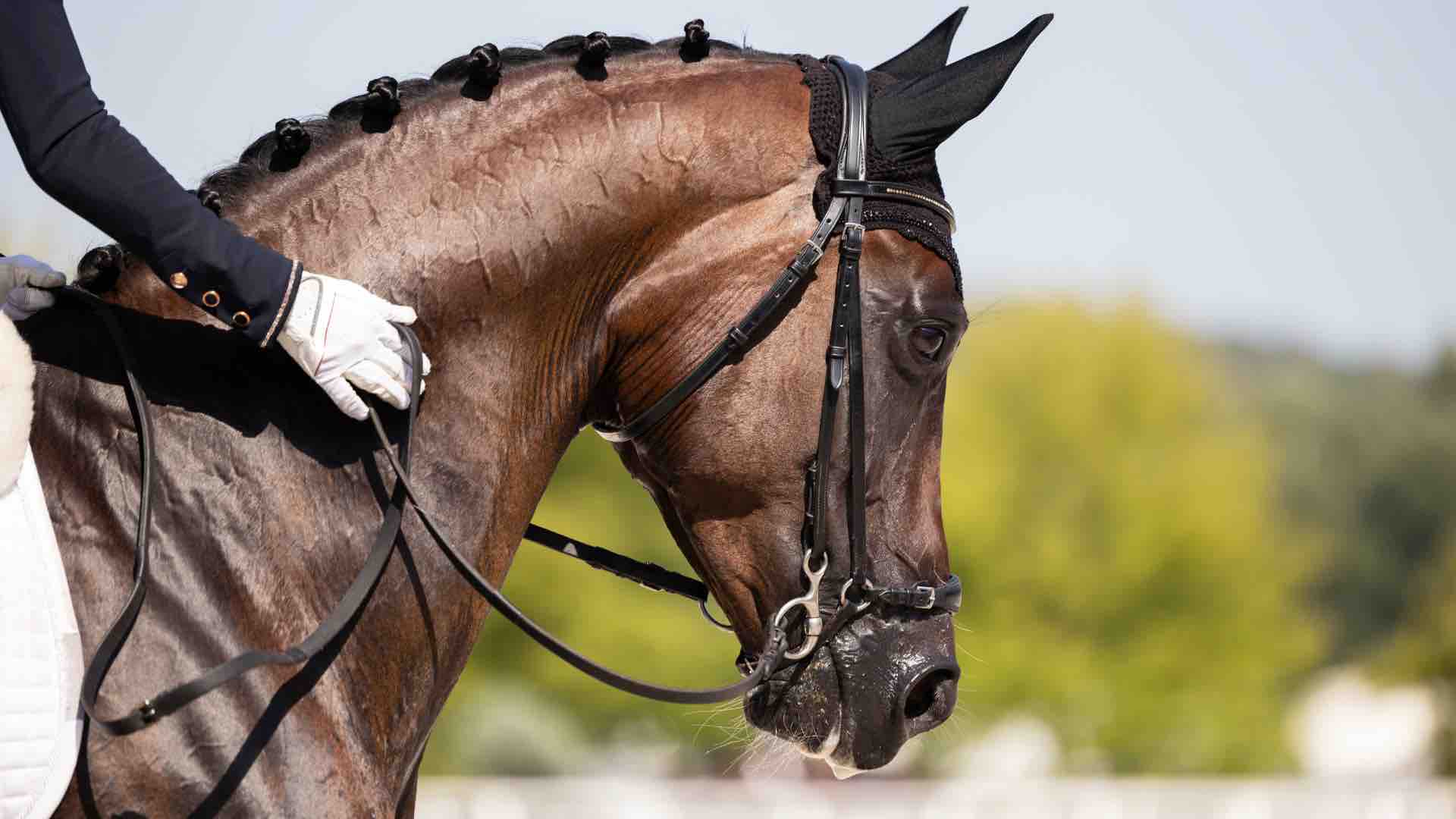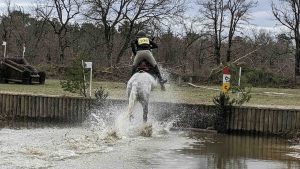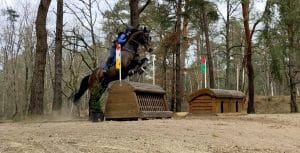True athletes, horses competing in international competitions follow well-established training routines. Insurance to put all the chances on your side and be physically and mentally ready for the challenges.
To learn more about preparing the dressage horse at the international level, we interviewed Dr. Silvia do Valle, veterinarian and contender for selection at the Paris 2024 Olympic Games in para-dressage.
The physical and mental preparation of the sport horse
Ekico : Hello Silvia ! Can you share with us what is the routine of your horse Gauguin to prepare him physically and mentally for a selection for the Olympic Games?
Do you think there is a difference between preparation for a classic national or international competition?
As a veterinarian, what points do you think are essential to monitor and prepare for the good health and performance of your horse?
Dr Silvia do Valle : “Gauguin's day starts with a wholesome meal. He then goes to the pasture for a few hours and comes in around noon, before it gets too hot or rains. He gets groomed and worked, then he has a shower and gets his lunch. He likes to take a nap after lunch and we often find him lying down in his stall. He then gets his legs rubbed with a gentle liniment and wrapped in standing bandages on the front for the night. He gets his dinner in the evening.
Once a week he gets a laser treatment, and every 2-4 weeks he gets acupuncture. Once every couple of months he gets a chiropractic treatment also. Once a week he gets a bubble bath with shampoo and his mane and tail are also washed, conditioned, detangled and combed. After I finish riding him and he cools down, we do some "carrot stretches" as he goes back to his stall.



He gets his vaccinations according to the FEI requirements, a complete blood test every year along with his Coggins test, his manure is checked for parasites every 4 months and he gets dewormed twice a year otherwise, in the summer to kill possible bots and in the late fall to kill encysted strongyles and tapeworms.
Gauguin eats lots of hay and his food is specifically to keep the athlete horse calm but powerful. He also gets a complete supplement and an herbal mix. He gets his teeth examined twice a year, and floated as needed.
His tack includes polo bandages on his front legs to protect his suspensories and tendons from too much strain, as the weather in Florida can be very rough on the rings, from severely heavy rain overnight to a scalding 35°C a few hours later. When I ride him, he also wears a sound dampening ear bonnet, because he tends to relax too much and not pay attention to me if there is something else going on around us. But with able-bodied riders he does not need it, as they have stronger legs as well as faster movements. He gets schooled 3 times a week by a friend who maintains him, then I ride or get a lesson 2-3 times a week. Once or twice a week my trainers ride him to get him more advanced movements, helping him get more supple for me. He has Sundays off or, if we show that weekend, Mondays off.
This routine gets him relaxed enough to perform well in the show but also fit and responsive to my weak aids. We prepare the same for a National show as we do for the Internationals. The main difference is the atmosphere. I get more tense and I try not to, but often I pass it on to him. He does not get nervous or anxious, but he is more careful at the international shows. He is very serious at the shows, he hardly ever relaxes and stops paying attention to me like he does at home. Maybe it is part myself, too. The international show are further away, and he has to stay at the FEI barn with strict work schedules, and that makes things a bit more complicated.

At shows, Gauguin goes for a 15 minute walk in the morning and if possible again in the afternoon. He does not get turned out. He cannot have acupuncture at the shows, but we can use the laser. His work schedule depends on the class schedule. We try to keep his routine as much as possible.
Gauguin was trained mostly for combined driving, and had just started dressage training right before I bought him. He is still learning a lot of the movements, as well as collection and proper transitions. He already knew a lot of things coming from the driving dressage, but others, such as turning on the haunches, are very new to him. Overall his personality is outstanding, he is eager to learn and tries his best to do what is asked, willing to please his riders.
We check his strides using the Tendiboots™ once a month to try to evaluate any possible changes. As a veterinarian, it is important to be proactive and prevent injuries at this level. The idea is to detect any subclinical lamenesses before they become an issue, and to evaluate the training so it can be modified to strengthen the weaker body areas.”
Locomotion monitoring and analysis
The training of the international sport horse in dressage
Ekico : And how is going the training of your horse in Dressage ? What do you work on specifically during the work sessions?
Dr Silvia do Valle : “Since he is still learning and improving a lot of minor exercises, we try to work on a few issues at a time. Lately, we have been working on suppleness, so he can learn to carry himself more independently. We are also working on him learning to speed up his responses to my aids, such as during transitions. Last week we started officially training the Renvers, and he has already learned a bit of the half pass to both directions. As an original driving horse, Gauguin has difficulties arching his body during the movements but he is a superb learner and we are improving dramatically each month.
We tend to train mostly the exercises he has to perform in the ring, but some of the more advanced exercises will help him improve the ones he already does. He trains canter with my trainers and my friend, as I have a lot of difficulty cantering horses, but he tries to please me and has learned a lot already. We are also working on voice commands, which are permitted at my para dressage grade.
Each session we start with a walk to warm up, on a long rein for the first couple of minutes, but soon at a shorter, more regular rein and pushing him to walk more like a march, on straight lines.
Then we trot along the ring, going forward, for a few more minutes. Next, we work on large circles and lateral movements, supple and improve his response to my aids. Then we do some transitions, from trot to walk and walk to trot, maybe a few serpentines with the transition over the centerline. We also practice transitions from working trot to medium trot and a bit of collected trot.
Before we finish, we do a few halts, some hind end awareness exercises, and practice 1/4 turns or turn on the haunches. We then do a good extended trot (as extended as I can stay on, so not much) and finish with a long rein walk to strengthen the topline. Once a week or so we add ground poles at walk and trot, just to help him learn to balance and collect on his own.

Occasionally, I work him on a lunge line. Sometimes I use a Chambon apparatus but mostly just work on transitions and spirals.
Unfortunately, I do not have the physical capacity to work with him in hand like he was trained the Lusitano way. Every week or 2, he goes on a long walk around the fields and woods in the property to ease his mind.
I believe it is very important for the horse to follow a routine, but this routine should be varied, not to repeat the same ring work daily, it is important to alternate ring work with trail or field rides, and the type of ring work, example include ground poles or cavalettis once a week. It is not only the ideal to condition the horse's body, but also his mind needs to be calm and focused but at the same time concentrated to respond with the proper amount of energy when asked for.”




